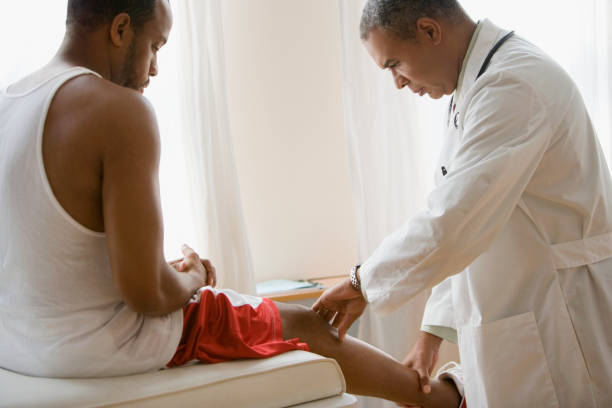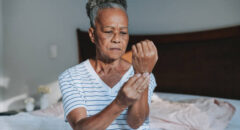
Knee replacement surgery is one of the most common procedures in the United States, with more than 790,000 performed each year. However, a new study from one hospital shows that Black patients are less likely than white patients to be satisfied with their care after the procedure.
Researchers reviewed survey responses from more than 2,500 people who underwent hip replacement and more than 2,100 people who had a knee replacement at the Hospital for Special Surgery (HHS) in New York City between July 2010 and February 2012.
"Our aim was to determine whether overall patient assessment scores differed by race or socioeconomic status," says senior investigator Dr. Susan Goodman, a rheumatologist at HSS.
In both groups, Black patients were more likely than whites to say they were "not completely satisfied" with their care after surgery, but there was no difference between Black and white patients in satisfaction with the outcome of their surgery.
A patient's primary health insurance coverage was not associated with satisfaction in any of the patient groups, according to the study, presented Tuesday at the American Academy of Orthopaedic Surgeons annual meeting, in Chicago. Such research is considered preliminary until published in a peer-reviewed journal.
Rehab or Steroid Shots: What’s Best for Arthritic Knees?
Blacks wait longer for treatment
"The study is important because we know that Black patients generally wait longer to seek treatment, presenting with worse pain and function prior to surgery, and we are trying to sort out the barriers to seeking timely care," says study co-author Dr. Mark Figgie, chief emeritus of HSS' Surgical Arthritis Service.
"Patient outcome measures indicate that although Black patients achieve significant improvement after surgery, it does not reach the same level as those who seek timely treatment," Figgie noted in an HHS news release.
"Confidence in the health care system may contribute to the delay in seeking care, and this is something we need to address," he adds.
"More research is needed to investigate other factors, such as perceived staff courtesy and baseline pain and function, to understand why disparities exist so we can achieve a high level of patient satisfaction for everyone," Goodman said in the release.
When is the best time for a knee replacement?
Deciding the time for knee replacement needs to be determined by you and your doctor, but certain factors make it more likely, according to experts at Keck Medicine of the University of Southern California.
Bad arthritis.
“Osteoarthritis, rheumatoid arthritis and post-traumatic arthritis affect the knee through different mechanisms, however, these different conditions are similar in that they all result in loss of cartilage, which causes pain and loss of motion," Dr. Nathanael Heckmann, orthopedic surgeon at Keck Medicine, said in a Keck news release. “When these symptoms become severe, knee replacement surgery may provide considerable symptom relief by replacing the worn-out surfaces of the knee."
When non-surgical treatments such as medications, steroid injections and physical therapy are no longer effective.
"As time passes, these arthritic conditions tend to progress in severity, rendering these types of treatments less and less effective," Heckmann adds.
Your knee pain prevents you from doing normal activities or caring for yourself.
"In general, the timing of a total knee replacement is determined by the impact the knee is having on your quality of life," says Dr. Jay Lieberman, chief of orthopedic surgery at Keck Medicine. "If conservative treatments are not working and you have significant pain while walking, you may be a good candidate for surgery."
Severe knee pain.
Especially if it happens even when resting and you can't sleep.
Swollen knees.
Particularly if your knee is always swollen.
Your knee has become deformed.
If you have advanced arthritis, it can affect the way you walk, which can also lead to further problems elsewhere in your body.
You're of a certain age.
While knee replacements are done in people of all ages, they're most common in those older than 60. That's because younger people's more active lifestyles may place too much strain on the artificial knee and shorten how long it lasts, and second replacement surgeries may not be as successful.
If you're thinking about knee replacement surgery, you need to know that you may have to avoid high-impact activities.
"Total knee replacement is quite successful in enabling patients to return to an active lifestyle -- patients can perform all types of recreational activities, including hiking, bicycling, skiing, surfing, tennis and golf," Lieberman said in the release. "In general, we do not limit activities but suggest that patients avoid impact activities on a consistent basis to reduce wear on the prosthesis."









